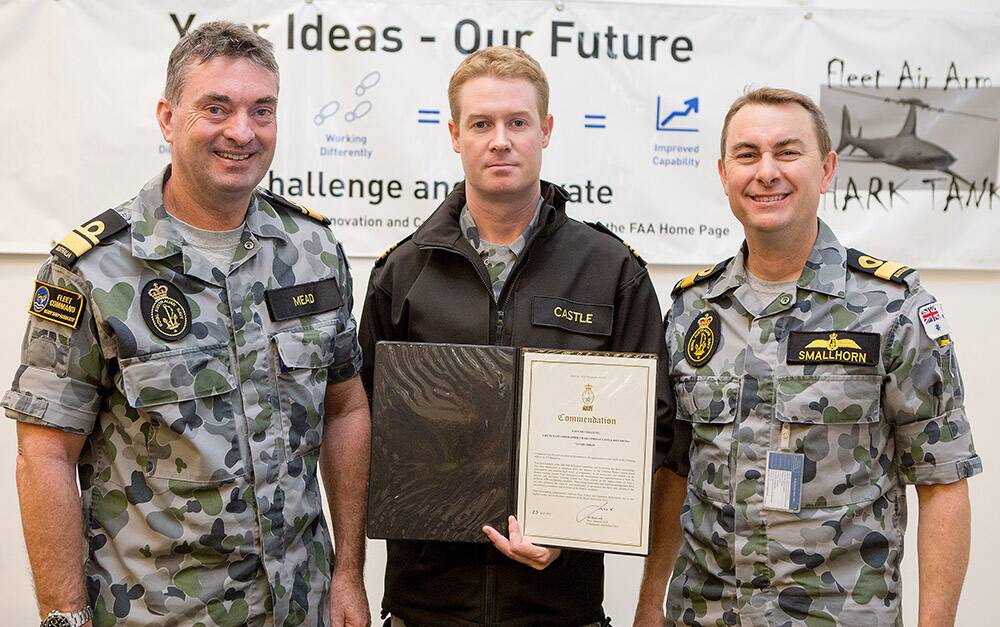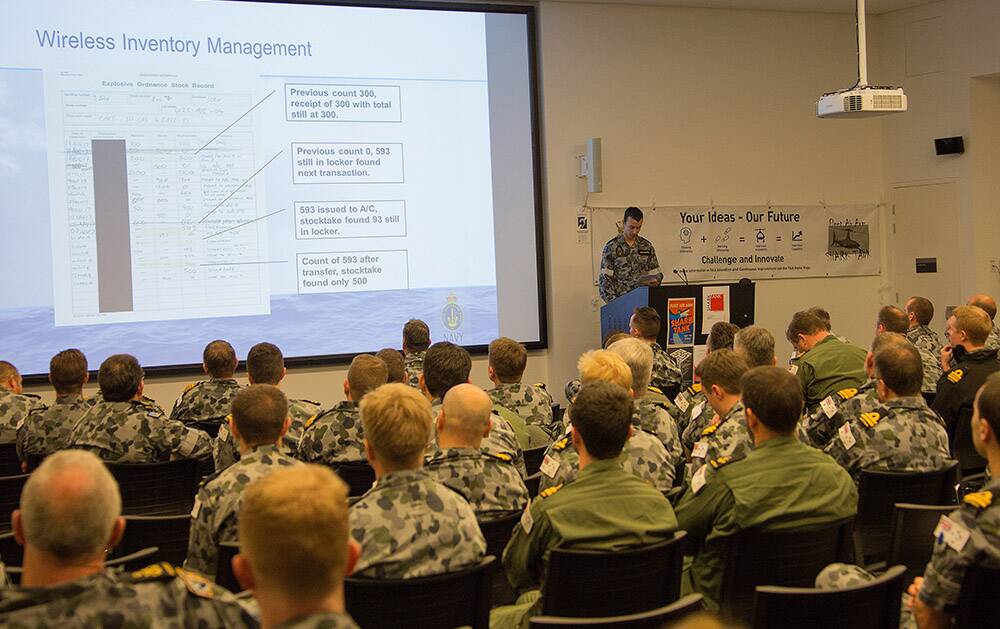
The Fleet Air Arm (FAA) Innovative Behaviours Program continues to produce results to get the best from the navy’s maritime aviation warfare capabilities.
Subscribe now for unlimited access.
or signup to continue reading
The fourth Fleet Air Arm Shark Tank (FAAST 4) at HMAS Albatross was attended by Commander Australian Fleet, Rear Admiral Jonathan Mead who was the guest presenter.
RADM Mead reflected on the need to embrace innovation and innovative behaviours to support fleet warfare goals and ultimately to fight and win at sea.
Commander Fleet Air Arm, Commodore Chris Smallhorn, complemented the presenters at the FAAST 4 on their courage and dedication to prepare and present their submissions.
“The cornerstone of our fighting capability is our people; we have great equipment, the best Australians, but we must strive to be greater than the sum of our parts,” he said.
“The FAAST provides an avenue for us, our community, to make changes that enhance our warfare capability, and to implement them as fast as we can.”
Two major innovation concepts were presented at FAAST 4.
The first concept highlighted a deployable ‘Bird Bath’ Wash Bay System (Lieutenant Paul Coughlan and Warrant Officer Scott Wake - 725 Squadron).

The system could be utilised on ships to provide better post-flight fresh water flushing of helicopters, with the intention of mitigating corrosion problems and reducing time in scheduled maintenance.
FAA business manager Dave Robinson said the concept could not only deliver increased capability, but would significantly reduce logistics support costs and free up many maintenance man-hours back to the squadrons.
The second concept was a wireless Explosive Ordnance (EO) Inventory Management Solution (Able Seaman Ben Bruinenberg - 725 Squadron).
Employing a Defence Wi-Fi enabled tablet-based real time point of sale style system, the design seeks to simplify data entry and reduce both effort and error rates.
This concept was voted the winner on the day, with guidance now being sought from CIOG on proposed innovation.
Other presentations at FAAST 4 included a Defence Common Access Card (DCAC) Bar Code Reader for training attendance tracking (Chief Petty Officer Chris Gardner), now being trialled at Albatross as a ‘Just do it’ innovation suggestion; and a presentation from the FAA/University of Sydney Systems Innovation Pilot Course 2 (Chief Petty Officer Russell McIntosh and Danielle Clunes, both graduates of the course).
The FAAST allows personnel of any rank, APS or service, to present concepts to a judging panel and audience.
Previous FAAST concepts presented and now implemented in the FAA include a Pressure Breathing Apparatus used for working with HAZCHEMs and HAZMAT that improves safety and reduces costs; and a Computer Aided Maintenance Management (CAMM2) live-virtual simulator that significantly enhances and accelerates the training experience of aviation technicians in the intricacies using CAMM2 and managing a flight line.

